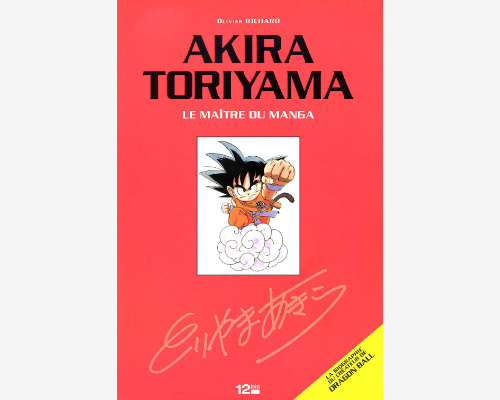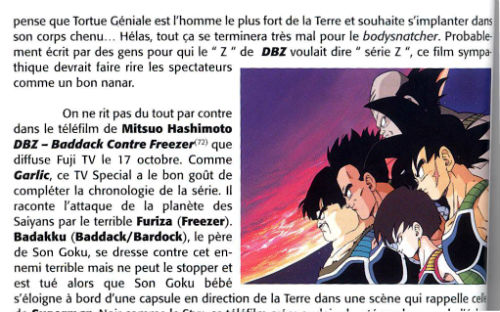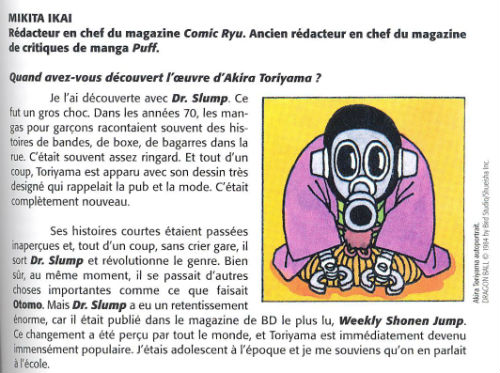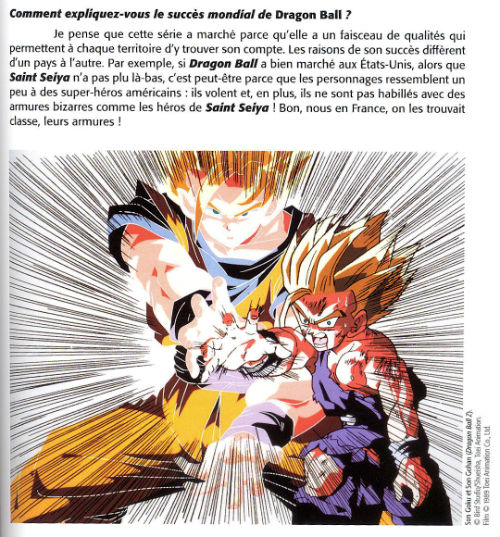Dragon Ball Book Review – Akira Toriyama – The Master of Manga
Akira Toriyama – The Master of Manga provides an easy to read summary of Toriyama’s life, career and success in Japan. It’s succinctly edited and well designed. While it doesn’t bring much new content to the table, it is the first book to be written about Akira Toriyama and does a good job at what it set out to do; chronologically revealing the life and career of Akira Toriyama.
Even after more than 30 years in the industry, and after creating the #1 selling shonen manga series of all time (at 300 million copies), there was until now no book about Akira Toriyama, one of the most influential manga authors in the world.
Written in French by author Olivier Richard, it’s clear that Richard gives respect to Toriyama and other shonen works, and that he understands the genre.
From the foreword, “In fact, as a best seller of the highest caliber, Dragon Ball falls into the same category as Star Wars, the cultural phenomenon. Like George Lucas’ space opera, Akira Toriyama’s manga has captivated millions of children, adolescents, and young adults who followed with almost religious fervor the adventures of Son Goku, the fascinating and charismatic hero of a true modern myth.”
[Note that the preceding quote and all others in this review were translated by Derek Padula.]
The books inside jacket says, “Olivier Richard has been interested in manga and Japanese animation for over twenty five years. He has written on the BD [comics in French], the cinema, animation and music in Rock & Folk magazine, Player One, The Show and Manga Player.”
Richard also worked in European television as a program director at MCM and helped distribute the Dragon Ball trilogy, One Piece, Full Metal Alchemist, and Bleach in Western Europe.
Akira Toriyama – The Master of Manga is 144 pages in total, divided into 13 chapters, plus the appendices and post content.
The book primarily talks about Dr. Slump and Dragon Ball, but also mentions many of Toriyama’s lesser known comics published in Japan, such as Wolf, Pola & Roid, and Kajika.
Unfortunately there is no table of contents or chapter titles, so you don’t know what you’re getting into before you invest the time to read it, and you’ll have to memorize the location of content if you want to reference it again later. There’s also no index, which is a shame since it’s non-fiction.
The book is very historical and follows a timeline of events, but it doesn’t tell much of a story. It’s a biography without really being a biography. Filled with What, When and Where, but not much of How, Who or Why. Some people might prefer that, but be aware that there are few quotes or original thoughts.
That said, there are occasional insights into Toriyama’s life that paint a nice picture of what his perspective might have been like during his rise as a manga author. For example, in Toriyama’s early years when his submissions were repeatedly rejected by Weekly Shonen Jump, and then finally accepted. And the powerful influence his editor, Torishima-san, had on his work.
In Chapter 7, Richard writes, “The editor feels that the character [of Goku] is not sufficiently developed, his potential is not operating at maximum, and is boring. He thinks Toriyama is too far from the original idea and that at present there is not enough fighting in Dragon Ball. … As always, Toriyama listened carefully to his mentor.”
At the end of the book is an appendix, which contains 13 interviews with notable industry figures talking about Toriyama and his work.
Interviewees include editors in chief’s of many manga magazines, the head producer at Namco Bandai (Daisuke Uchiyama) who made the video game Dragon Ball: Ultimate Tenkaichi, a Bandai Toy developer, a professor of manga, journalists, manga authors, a children’s television director, and others.
The interviews are perhaps my favorite part of the book because they provide original content, even if they are mainly opinions and anecdotal experiences.
After the appendices there is a chronology of Toriyama’s life and career, followed by a timeline bibliography of Toriyama’s work referenced in this book. These can be useful as reference material.
The book is thoroughly researched and up to date, with a short section for the series’ latest incarnations, including the Dragon Ball SD manga, Bardock Super Saiyan Special manga, Dragon Ball Heroes carddass game, and Dragon Ball Online.
The book design is simple, clean, and easy to read, with detailed, full color pictures of Toriyama’s work and related merchandise. This adds greatly to the books value.
Should this book be purchased if you don’t speak French? Being unable to read the content will obviously have an effect on your enjoyment of the book, but if you’re familiar with any of the Romance languages, then you may be able to understand a bit. If you don’t speak French or don’t want to type the content into an online translator, then wait until your preferred translation is available.
It’s hard to find fault with Akira Toriyama – The Master of Manga. It is perhaps too simple, but less is more when you’re trying to achieve a specific goal, and this book achieves it.
Is Akira Toriyama – The Master of Manga worth buying?
If you’re a huge fan of Toriyama, then you probably already know about his life and career and won’t get much more out of this summary, as there’s sparse new content.
But for those who want a beautiful and concise reference manual on Toriyama, one of the most monumental figures in the manga industry, this book is it.
Dragon Ball Book Information
Author: Olivier Richard
Publisher: 12 bis
Price: EUR 19.00
Pages: 144
ISBN: 978-2-35648-332-4
Further Resources
' . $comment->comment_content . '
'; } } else { echo 'No comments found.'; }


